COLDPLAY – ILLUMINATI SONG VIVA LA VIDA OCCULT SYMBOLISM
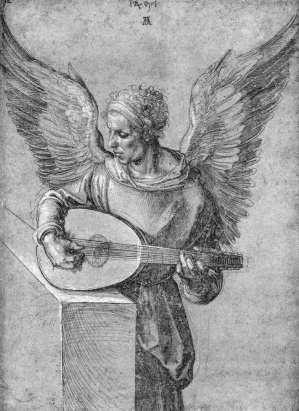
VIVA LA VIDA
(This song seems to be an announcement of the upcoming Third World War to those in the know)
Part one of three
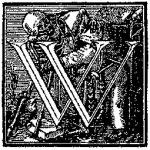 hoever wrote this song should be adept of the occult schools. If you think that “Stairway to Heaven” is full of symbolism, wait until you read this information. If you are not in the in the know, you could never get it!!!! Here is part one of my research on the occult symbolism of the Coldplay song titled “VIVA LA VIDA. The lyrics have been highlighted to make easy for the “blinded” to get a better grip of it all! First take a look at the name of the band: COLDPLAY. COLD = lacking in passion, emotion, enthusiasm, ardor, etc.; dispassionate: cold reason. PLAY = an attempt to accomplish something, often in a manner showing craft or calculation; maneuver. It appears to me that it alludes to Secular Humanism characterized by situational ethics. Now, that explains the COLD part and I wander what the PLAY might be!
hoever wrote this song should be adept of the occult schools. If you think that “Stairway to Heaven” is full of symbolism, wait until you read this information. If you are not in the in the know, you could never get it!!!! Here is part one of my research on the occult symbolism of the Coldplay song titled “VIVA LA VIDA. The lyrics have been highlighted to make easy for the “blinded” to get a better grip of it all! First take a look at the name of the band: COLDPLAY. COLD = lacking in passion, emotion, enthusiasm, ardor, etc.; dispassionate: cold reason. PLAY = an attempt to accomplish something, often in a manner showing craft or calculation; maneuver. It appears to me that it alludes to Secular Humanism characterized by situational ethics. Now, that explains the COLD part and I wander what the PLAY might be!
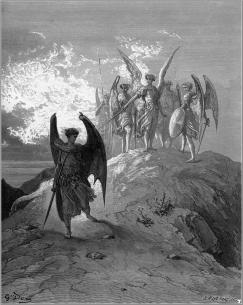
I used to rule the world = (referring to the Fallen God, Lucifer)
Seas would rise when I gave the word = (spirit of God moved upon the face of the waters see Bible)
Now in the morning I sleep alone = (a cast out star)
Sweep the streets I used to own.
I used to roll the dice = (possession of Power referring to the ruler)
Feel the fear in my enemies’ eyes
Listen as the crowd would sing,
“Now the old king is dead, long live the King!” (Resurrection, alchemical INRI) = (The Fall signifies the incarnation of the spirit. ‘Man’, observes Jakob Böhme, in De signatura, ‘died, in so far as he was purely divine essence, because his inner desires, bursting out from the inner fiery centre . . . tended towards external and temporary birth.’ Thus (in Evola’s transcription), the divine essence or ‘inner corporeity’ (which nevertheless persists within Man) suffers physical ‘death’)
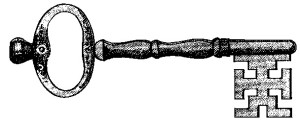 One minute I held the key = (All the knowledge, earthly power) KEY As an attribute, it pertains to several mythic characters, including Hecate. It is symbolic of mystery or enigma, or of a task to be performed, and the means of carrying it out. It sometimes refers to the threshold of the unconscious. The key to knowledge corresponds, within the cycle of the year, to the month of June (healing). The conjunction of the symbols of the male dove and the key signifies the spirit opening the gates of heaven. The emblem formed by two keys, sometimes placed over a heart, relates to Janus. In legend and folklore, three keys are often used to symbolize a like number of secret chambers full of precious objects. They are symbolic representations of initiation and knowledge.
One minute I held the key = (All the knowledge, earthly power) KEY As an attribute, it pertains to several mythic characters, including Hecate. It is symbolic of mystery or enigma, or of a task to be performed, and the means of carrying it out. It sometimes refers to the threshold of the unconscious. The key to knowledge corresponds, within the cycle of the year, to the month of June (healing). The conjunction of the symbols of the male dove and the key signifies the spirit opening the gates of heaven. The emblem formed by two keys, sometimes placed over a heart, relates to Janus. In legend and folklore, three keys are often used to symbolize a like number of secret chambers full of precious objects. They are symbolic representations of initiation and knowledge.
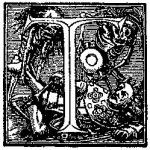 he first key, of silver, concerns what can be revealed by psychological understanding; the second is made of gold, and pertains to philosophical wisdom; the third and last, of diamond, confers the power to act. The finding of a key signifies the stage prior to the actual discovery of the treasure, found only after great difficulties. Clearly there is a morpho logical relationship between the key and the Nem Ankh sign (or ‘Eternal Life’)—the anserated cross of the KING 168 Egyptians; their gods are sometimes shown holding this cross by the top as if it were a key, especially in ceremonies concerning the dead. But it should perhaps be pointed out that, in this case, it is the keys that derive from the anserated cross, the archetype of the key of Eternal Life that opens up the gates of death on to immortality.
he first key, of silver, concerns what can be revealed by psychological understanding; the second is made of gold, and pertains to philosophical wisdom; the third and last, of diamond, confers the power to act. The finding of a key signifies the stage prior to the actual discovery of the treasure, found only after great difficulties. Clearly there is a morpho logical relationship between the key and the Nem Ankh sign (or ‘Eternal Life’)—the anserated cross of the KING 168 Egyptians; their gods are sometimes shown holding this cross by the top as if it were a key, especially in ceremonies concerning the dead. But it should perhaps be pointed out that, in this case, it is the keys that derive from the anserated cross, the archetype of the key of Eternal Life that opens up the gates of death on to immortality.
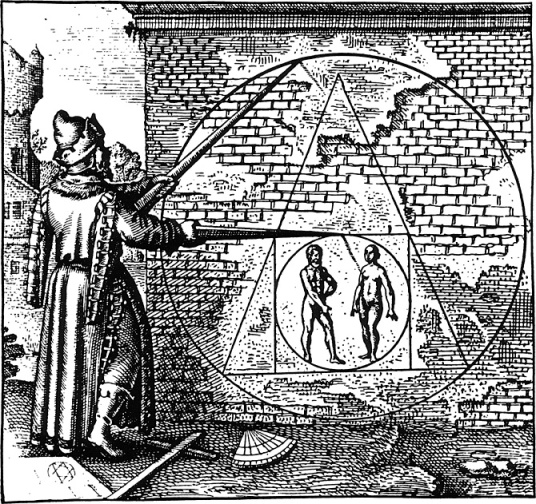
THE WALL
Next the walls were closed on me. THE WALL Its significance is diverse, depending upon which of its different characteristics is taken as fundamental. In the Egyptian system of hieroglyphs, the wall is a determinative sign conveying the idea of ‘rising above the common level’; clearly the predominant sense here is that of its height. A wall enclosing a space is the ‘wall of lamentations’, symbolic of the sensation of the world as a ‘cavern’—of the doctrine of immanentism or the metaphysical notion of the impossibility of reaching the outside. It expresses the ideas of impotence, delay, resistance, or a limiting situation. Now, the wall seen from within as an enclosure has a secondary implication of protection which, according to its function and the attitude of the individual, may even be taken as its principal meaning. Psychoanalysts frequently regard it in this light and hence have classified it as a mother symbol, comparable with the town and the house or home. Bayley sums up 363 WAR the two essential features of the wall as follows: Like the house, it is a mystic symbol representing the feminine element of mankind. This enables us to understand the (otherwise absurd) assertion of the Shulamite in the Song of Songs: ‘I am a wall’. At the same time, this image has another term of comparison, that of matter as opposed to spirit. It should be noted that the symbolism in the latter case remains unchanged, since matter corresponds to the passive or feminine principle, and spirit to the active or masculine.
![]() And I discovered that my castle stands upon pillars of salt, and pillars of sand (Salt is the third heavenly substance in alchemy and represents the final manifestation of the perfected Stone. The Emerald Tablet calls it “the Glory of the Whole Universe.” For Paracelsus, Salt was like a balsam the body produced to shield itself from decay. It has also been associated with the Ouroboros, the Stone, and the Astral Body. In general, Salt represents the action of thought on matter, be it the One Mind acting on the One Thing of the=2 0universe or the alchemist meditating in his inner laboratory.) (Sand = the alchemist also tried to obtain gold from Sand thus gold is the perfect soul and sand the imperfect soul)
And I discovered that my castle stands upon pillars of salt, and pillars of sand (Salt is the third heavenly substance in alchemy and represents the final manifestation of the perfected Stone. The Emerald Tablet calls it “the Glory of the Whole Universe.” For Paracelsus, Salt was like a balsam the body produced to shield itself from decay. It has also been associated with the Ouroboros, the Stone, and the Astral Body. In general, Salt represents the action of thought on matter, be it the One Mind acting on the One Thing of the=2 0universe or the alchemist meditating in his inner laboratory.) (Sand = the alchemist also tried to obtain gold from Sand thus gold is the perfect soul and sand the imperfect soul)
I hear Jerusalem, bells are ringing (the spirit calls God – (the bell is the symbol of man calling God)
 Roman cavalry choirs are singing, (the armies of the Pope)
Roman cavalry choirs are singing, (the armies of the Pope)
“Be my mirror, my sword and shield ( MIRROR= the soul reflects the universe- has the same characteristics as the mirror in fact; the temporal and existential variety of its function provides the explanation of its significance and at the same time the diversity of its meaningful associations. It has been said that it is a symbol of the imagination—or of consciousness—in its capacity to reflect the formal reality of the visible world. It has also been related to thought, in so far as thought—for Scheler and other philosophers—is the instrument of self-contemplation as well as the reflection of the universe. This links mirror-symbolism with water as a reflector and with the Narcissus myth: the cosmos appears as a huge Narcissus regarding his own reflections in the human consciousness. Now, the world, as a state of discontinuity affected by the laws of change and substitution, is the agent which projects this quasinegative, kaleidoscopic image of appearance and disappearance reflected in the mirror. From the earliest times, the mirror has been thought of as ambivalent. It is a surface which reproduces images and in a way contai ns and absorbs them. In legend and folklore, it is frequently invested with a magic quality—a mere hypertrophic version of its fundamental meaning. In this way it serves to invoke apparitions by conjuring up again the images which it has received at some time in the past, or by annihilating distances when it reflects what was once an object facing it and now is far removed.
 his fluctuation between the ‘absent’ mirror and the ‘peopled’ mirror lends it a kind of phasing, feminine in implication, and hence—like the fan—it is related to moon-symbolism. Further evidence that the mirror is lunar is afforded by its reflecting and passive characteristics, for it receives images as the moon receives the light of the sun. Again, its close relationship to the moon is demonstrated by the fact that among the primitives it was seen as a symbol of the multiplicity of the soul: of its mobility and its ability to adapt itself to those objects which ‘visit’ it and retain its ‘interest’. At times, it takes the mythic form of a door through which the soul may free itself ‘passing’ to the other side: this is an idea reproduced by Lewis Carroll in Alice Through the Looking Glass. This alone is sufficient explanation of the custom of covering up mirrors or turning them to face the wall on certain occasions, in particular when someone in the house dies. All that we have said so far by no means exhausts the complex symbolism of the mirror: like the echo, it stands for twins (thesis and antithesis), and specifically for the sea of flames (or life as an infirmity). For Loeffler, mirrors are magic symbols for unconscious memories (comparable with crystal palaces). Hand-mirrors, in particular, are emblems of truth, and in China they are supposed to have an allegorical function as aids to conjugal happiness as well as a protection against diabolical influences.
his fluctuation between the ‘absent’ mirror and the ‘peopled’ mirror lends it a kind of phasing, feminine in implication, and hence—like the fan—it is related to moon-symbolism. Further evidence that the mirror is lunar is afforded by its reflecting and passive characteristics, for it receives images as the moon receives the light of the sun. Again, its close relationship to the moon is demonstrated by the fact that among the primitives it was seen as a symbol of the multiplicity of the soul: of its mobility and its ability to adapt itself to those objects which ‘visit’ it and retain its ‘interest’. At times, it takes the mythic form of a door through which the soul may free itself ‘passing’ to the other side: this is an idea reproduced by Lewis Carroll in Alice Through the Looking Glass. This alone is sufficient explanation of the custom of covering up mirrors or turning them to face the wall on certain occasions, in particular when someone in the house dies. All that we have said so far by no means exhausts the complex symbolism of the mirror: like the echo, it stands for twins (thesis and antithesis), and specifically for the sea of flames (or life as an infirmity). For Loeffler, mirrors are magic symbols for unconscious memories (comparable with crystal palaces). Hand-mirrors, in particular, are emblems of truth, and in China they are supposed to have an allegorical function as aids to conjugal happiness as well as a protection against diabolical influences.
 THE SWORD = justice no sir in this case means war) Sword The sword is in essence composed of a bla de and a guard; it is therefore a symbol of ‘conjunction’, especially when, in the Middle Ages, it takes on the form of a cross. Among many primitive peoples it was the object of much veneration. The Scythians used to make an annual sacrifice of several horses to the blade of a sword, which they conceived as a god of war. Similarly, the Romans believed that iron, because of its association with Mars, was capable of warding off evil spirits. The belief still persists in Scotland. Founders of cities, in the ancient Che-King tales of China, wear swords. As a religious symbol, it is still in use as part of the ceremonial dress of oriental bishops. Its primary symbolic meaning, however, is of a wound and the power to wound, and hence of liberty and strength. Schneider has shown that, in megalithic culture, the sword is the counterpart of the distaff, which is the feminine symbol of the continuity of life.
THE SWORD = justice no sir in this case means war) Sword The sword is in essence composed of a bla de and a guard; it is therefore a symbol of ‘conjunction’, especially when, in the Middle Ages, it takes on the form of a cross. Among many primitive peoples it was the object of much veneration. The Scythians used to make an annual sacrifice of several horses to the blade of a sword, which they conceived as a god of war. Similarly, the Romans believed that iron, because of its association with Mars, was capable of warding off evil spirits. The belief still persists in Scotland. Founders of cities, in the ancient Che-King tales of China, wear swords. As a religious symbol, it is still in use as part of the ceremonial dress of oriental bishops. Its primary symbolic meaning, however, is of a wound and the power to wound, and hence of liberty and strength. Schneider has shown that, in megalithic culture, the sword is the counterpart of the distaff, which is the feminine symbol of the continuity of life.
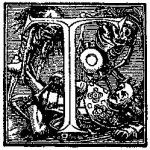 he sword and the distaff symbolize, respectively, death and fertility—the two opposites which constitute the basic symbolism of the mountain (Schneider suggests that in the animal world the equivalents are the phallic fish and the frog). Furthermore, given the cosmic sense of sacrifice (that is, the inversion of the implied realities of the terrestrial and the celestial orders), the sword is then seen as a symbol of physical extermination and psychic decision, as well as of the spirit and the word of God, the latter being a particularly common symbol during the Middle Ages. In this connexion, Bayley draws attention to the interesting relationship between the English words sword and word. There can be no doubtthat there is a sociological factor in sword-symbolism, since the sword is an instrument proper to the knight, who is the defender of the forces of light against the forces of darkness. But the fact is that in rites at the dawning of history and in folklore even today, the sword plays a similar spiritual rôle, with the magic power to fight off the dark powers personified in the ‘malevolent dead’, which is why it always figures in apotropaic dances. When it appears in association with fire and flames—which correspond to it in shape and resplendence—it symbolizes purification.
he sword and the distaff symbolize, respectively, death and fertility—the two opposites which constitute the basic symbolism of the mountain (Schneider suggests that in the animal world the equivalents are the phallic fish and the frog). Furthermore, given the cosmic sense of sacrifice (that is, the inversion of the implied realities of the terrestrial and the celestial orders), the sword is then seen as a symbol of physical extermination and psychic decision, as well as of the spirit and the word of God, the latter being a particularly common symbol during the Middle Ages. In this connexion, Bayley draws attention to the interesting relationship between the English words sword and word. There can be no doubtthat there is a sociological factor in sword-symbolism, since the sword is an instrument proper to the knight, who is the defender of the forces of light against the forces of darkness. But the fact is that in rites at the dawning of history and in folklore even today, the sword plays a similar spiritual rôle, with the magic power to fight off the dark powers personified in the ‘malevolent dead’, which is why it always figures in apotropaic dances. When it appears in association with fire and flames—which correspond to it in shape and resplendence—it symbolizes purification.
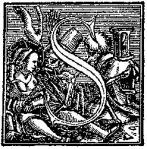 chneider bears this out with his comment that whereas purification goes with fire and the sword, punishment goes with the lash and the club. In alchemy, the sword is a symbol for purifying fire. The golden sword—Chrysaor in Greek mythology—is a symbol for supreme spiritualization. The Western type of sword, with its straight blade, is, by virtue of its shape, a solar and masculine symbol. The Oriental sword, being curved, is lunar and feminine. Here one must recall the general meaning of weapons, which is the antithesis of the monster. The sword, because of its implication of ‘physical extermination’, must be a symbol of spiritual evolution, just as the tree is of involution; that is, the tree stands for the development of life within matter and activity.
chneider bears this out with his comment that whereas purification goes with fire and the sword, punishment goes with the lash and the club. In alchemy, the sword is a symbol for purifying fire. The golden sword—Chrysaor in Greek mythology—is a symbol for supreme spiritualization. The Western type of sword, with its straight blade, is, by virtue of its shape, a solar and masculine symbol. The Oriental sword, being curved, is lunar and feminine. Here one must recall the general meaning of weapons, which is the antithesis of the monster. The sword, because of its implication of ‘physical extermination’, must be a symbol of spiritual evolution, just as the tree is of involution; that is, the tree stands for the development of life within matter and activity.
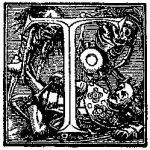 his dualism between the spirit on the one hand and life on the other was resolved by Ludwig Klages, for his part, by opting for life, but Novalis has well expressed the contrary opinion with his observation that ‘life is an infirmity of the spirit’. It is a duality which is well illustrated by the opposing characteristics of wood (which is feminine) and metal. If the tree corresponds to the process of proliferation, then the sword represents the inverse. At least Conrad Dinckmut’s Seelen Wurzgarten (Ulm, 1483), like many other similar works, has a 15thcentury illustration of Christ with a branch or a tree on the left side of his face, whereas symmetrically opposite there is a sword. This association of the sword with the tree is of great antiquity: we ourselves have seen a prehistoric Germanic relief depicting two figures, one being feminine and bearing a branch, the other masculine, with a sword. One may also see here an allegory of War and Peace; certainly the mediaeval illustration may allude to the olive branch, but there is nothing of this in the Germanic relief.
his dualism between the spirit on the one hand and life on the other was resolved by Ludwig Klages, for his part, by opting for life, but Novalis has well expressed the contrary opinion with his observation that ‘life is an infirmity of the spirit’. It is a duality which is well illustrated by the opposing characteristics of wood (which is feminine) and metal. If the tree corresponds to the process of proliferation, then the sword represents the inverse. At least Conrad Dinckmut’s Seelen Wurzgarten (Ulm, 1483), like many other similar works, has a 15thcentury illustration of Christ with a branch or a tree on the left side of his face, whereas symmetrically opposite there is a sword. This association of the sword with the tree is of great antiquity: we ourselves have seen a prehistoric Germanic relief depicting two figures, one being feminine and bearing a branch, the other masculine, with a sword. One may also see here an allegory of War and Peace; certainly the mediaeval illustration may allude to the olive branch, but there is nothing of this in the Germanic relief.
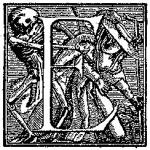 vola maintains that the sword is related to Mars, but with addi tional vertical—and orizontal—symbolisms, alluding, that is, to life and death. It is also linked with steel as a symbol of the transcendent toughness of the all-conquering spirit. There is an Arabic tradition to the effect that it was the Hebrews who invented the sword, and that the place where it was first made—a tragic sign of how the idea first came into the world—was mount Casium, on the outskirts of Damascus, which was to become famous throughout Islam on account of its steel, and where, according to the ancient belief, Cain slew his brother.
vola maintains that the sword is related to Mars, but with addi tional vertical—and orizontal—symbolisms, alluding, that is, to life and death. It is also linked with steel as a symbol of the transcendent toughness of the all-conquering spirit. There is an Arabic tradition to the effect that it was the Hebrews who invented the sword, and that the place where it was first made—a tragic sign of how the idea first came into the world—was mount Casium, on the outskirts of Damascus, which was to become famous throughout Islam on account of its steel, and where, according to the ancient belief, Cain slew his brother. 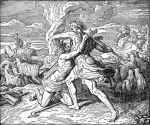 There, by an accident of fate, settled the first artificers of the newly invented weapon.’ The sword of fire bears testimony to the intrinsic relationship between the symbols of the sword, steel (or iron), Mars and fire, all of which have a ‘common rhythm’. On the other hand, it emphasizes the heat of the flame and the coldness of the bare metal; hence, the sword of fire is a symbol implying an ambivalent synthesis, like the volcano (gelat et ardet),and also a symbol of the weapon which severs Paradise (the realm of the fire of love) from earth (the world of affliction).
There, by an accident of fate, settled the first artificers of the newly invented weapon.’ The sword of fire bears testimony to the intrinsic relationship between the symbols of the sword, steel (or iron), Mars and fire, all of which have a ‘common rhythm’. On the other hand, it emphasizes the heat of the flame and the coldness of the bare metal; hence, the sword of fire is a symbol implying an ambivalent synthesis, like the volcano (gelat et ardet),and also a symbol of the weapon which severs Paradise (the realm of the fire of love) from earth (the world of affliction).
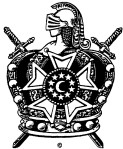 (THE SHIELD) = Shield The symbolic significance of the shield amounts to a simple transposition of its defensive function to the spiritual plane. The fact that coats-of-arms were generally emblazoned upon shields yields an additional meaning which may be interpreted as implying that the knight defends himself by displaying his identity and invoking it in the hour of peril.
(THE SHIELD) = Shield The symbolic significance of the shield amounts to a simple transposition of its defensive function to the spiritual plane. The fact that coats-of-arms were generally emblazoned upon shields yields an additional meaning which may be interpreted as implying that the knight defends himself by displaying his identity and invoking it in the hour of peril.
(TO BE CONTINUED)
19 Comments »
Leave a reply to Martine/ Petrajhayne Cancel reply
| Next »
-
Recent
- Slender Man
- THE SYMBOL
- RUNNER – MANFRED MANN’S EARTH BAND
- Jesus Calms the Storm (Mark 4:35-41)
- A True Yet Little Known Fact About Genesis
- LIL WAYNE’S “ON FIRE”: OCCULT SYMBOLISM
- Rockefeller Center – OCCULT SYMBOLISM
- Lucifer – Occult Symbolism of the Statue of Liberty
- THE PRISONER
- BLACK EYED PEAS – OCCULT SYMBOLISM OF MEET ME HALFWAY
- The Matrix – Occult Symbolism
- PSALM 73
-
Links
-
Archives
- June 2014 (1)
- April 2014 (1)
- September 2012 (1)
- June 2011 (1)
- April 2010 (1)
- February 2010 (1)
- January 2010 (1)
- December 2009 (2)
- November 2009 (2)
- August 2009 (1)
- July 2009 (3)
-
Categories
-
RSS
Entries RSS
Comments RSS


This is something to read.
No, I do not know.
Eve did not use any other argument to convince Adam than that which the Serpent gave her. So his error in judgment was equal to that of Eve. This means that their personalities were at the same level of development. He was not suppose to surrender to any argument contrary to the will of God, not even if it was presented to him by his wife.
This is interesting.
“Be my mirror, my sword and shield” the Bible has a reference on this too. How come yours don’t? Don’t take this the wrong way, but the song’s lyrics can also be about Jesus Christ. You just need to think wider…
I appreciate your comment and I’ll look into that! Given the financial situation in the USA I have been working two jobs and actually have little or no time to write but soon that will change.
Really, it’s written in the bible to not judge anyone, and this letter may have to do with jesus even depending on your point of view, does not act with malice. peace, hug
Thou shall not judge? If I say to you: “I will not judge you” is not that statement a judgement in itself?
If Coldplay was Illuminati, don’t you think they would have made every song they wrote about Illuminati matters?
Musicians write about different stuff! This song and its video in particular though, are full of esoteric terms are postures known to those “in the know”.
Dude this stuff is crazy… Coldplay is totally a meat puppet for the Illuminati
SO in the end…is this song good or bad?
I leave it up to you my friend!
Scary isn’t it?At first it don’t make sense but then the lyric ‘next the wall were closed on me’..thats where my suspicion came..
This is the great song by Coldplay. The video clip is also great. Coldplay is awesome. I love Chris Martin 😀
Very good perception you have, I would love to chat with you more… As I totally agree” -PetraJhayne
after xy they totally sold out. i hate them now so much because every song practically is about illuminati stuff. paradise is about fracturing the personality of a little girl through monarch programing. i hate bands like this because they make this stuff seem good when it is evil. are their no bands willing to expose their masters?!
Hello there! This is my 1st comment here so I just wanted
to give a quick shout out and tell you I genuinely enjoy
reading your articles. Can you suggest any other blogs/websites/forums that go over the same topics?
Appreciate it!
Heavy stuff, OP! Looks like you’re pretty based, love your work! Keep going 😉